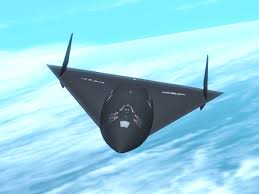
Introduction
In the realm of military operations and national security, reconnaissance aircraft play a crucial role. These specialized aircraft gather vital intelligence and information on enemy positions, movements, and capabilities, significantly influencing strategic decision-making. In an era where information is power, the relevance of reconnaissance aircraft cannot be overstated.
Current Developments in Reconnaissance Aircraft Technology
The technological advancements in aircraft design and functionality have transformed reconnaissance capabilities. Modern reconnaissance aircraft, such as the Northrop Grumman Global Hawk and the Boeing P-8 Poseidon, are equipped with sophisticated sensors and surveillance technologies that enable them to conduct long-range missions with precision. For example, the Global Hawk can fly at altitudes of 60,000 feet for over 30 hours, covering vast areas without needing to be refueled. This capability allows military forces to obtain near-real-time imagery and data, crucial for situational awareness.
Recent Deployments
Recently, reconnaissance aircraft have been deployed in various conflict zones to support military operations. For instance, in Eastern Europe, NATO forces have utilized aerial reconnaissance to monitor troop movements and military exercises by adversary nations, ensuring preparedness and effective response strategies. Furthermore, during the ongoing tensions in the South China Sea, reconnaissance planes have been instrumental in tracking maritime activity and asserting freedom of navigation rights, showcasing their importance in regional security matters.
Challenges Faced by Reconnaissance Aircraft
Despite their advantages, reconnaissance aircraft face numerous challenges. Increasing advancements in enemy air defense systems pose a significant threat. Countries are investing in electronic warfare and anti-aircraft technologies, making it imperative for reconnaissance aircraft to adopt advanced countermeasures. Additionally, the increasing reliance on drones and unmanned aerial vehicles (UAVs) for reconnaissance missions raises questions about the future role of traditional manned reconnaissance aircraft.
Conclusion
In conclusion, reconnaissance aircraft serve as a cornerstone of modern military operations, providing indispensable intelligence that shapes strategic actions. With ongoing technological advancements and the necessity for innovation to counter emerging threats, the significance of reconnaissance aircraft is likely to grow. As nations continue to prioritize national security and military readiness, the development and deployment of advanced reconnaissance capabilities will be crucial in adapting to the complexities of contemporary warfare.



